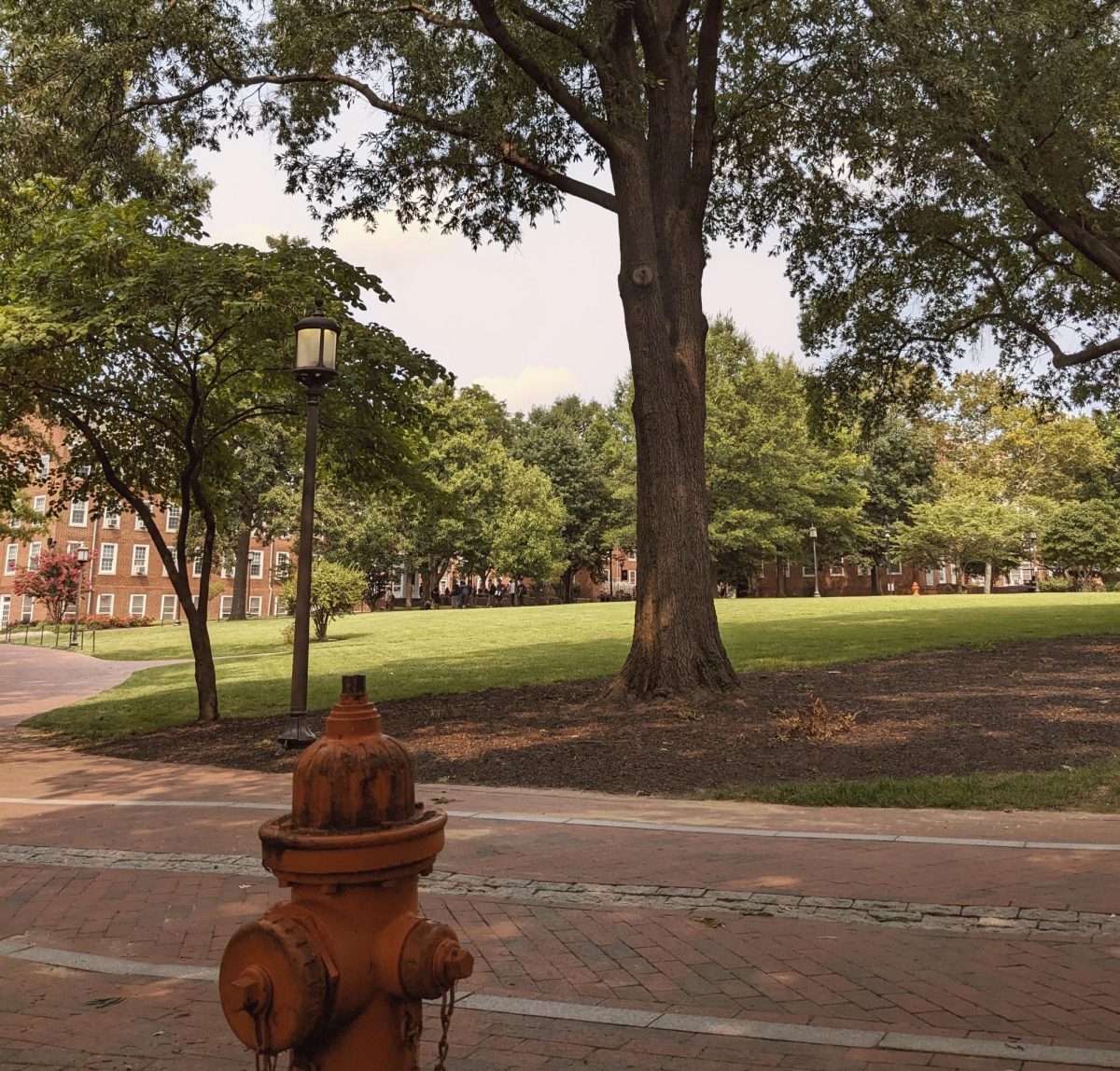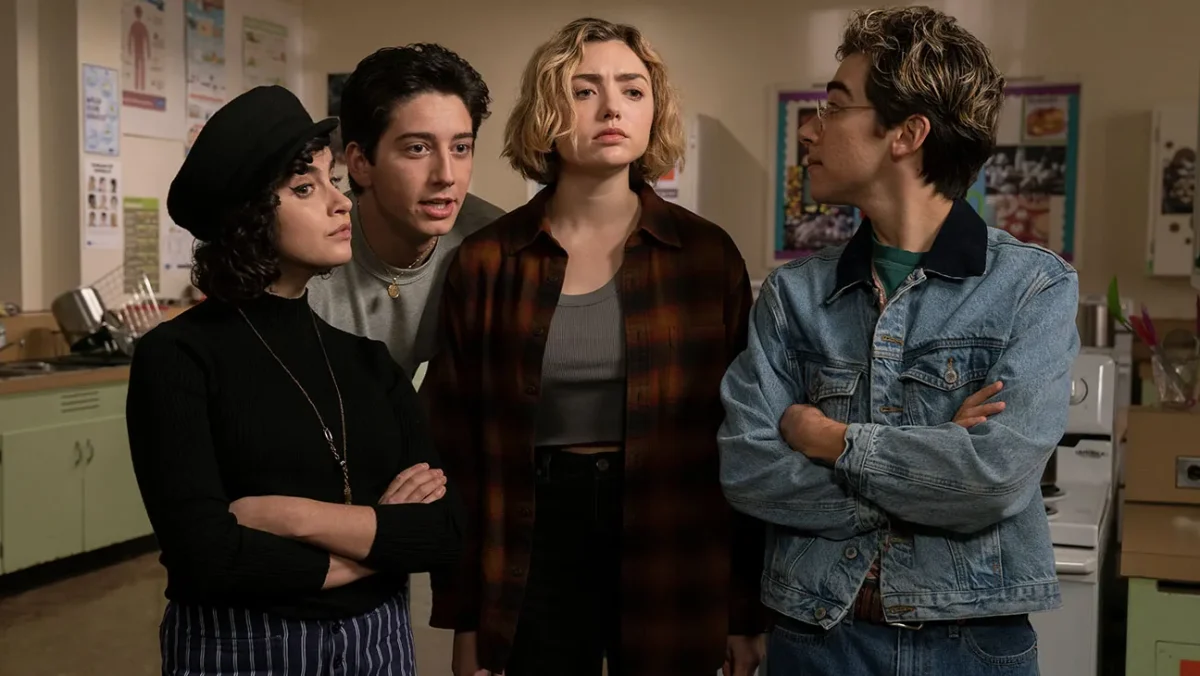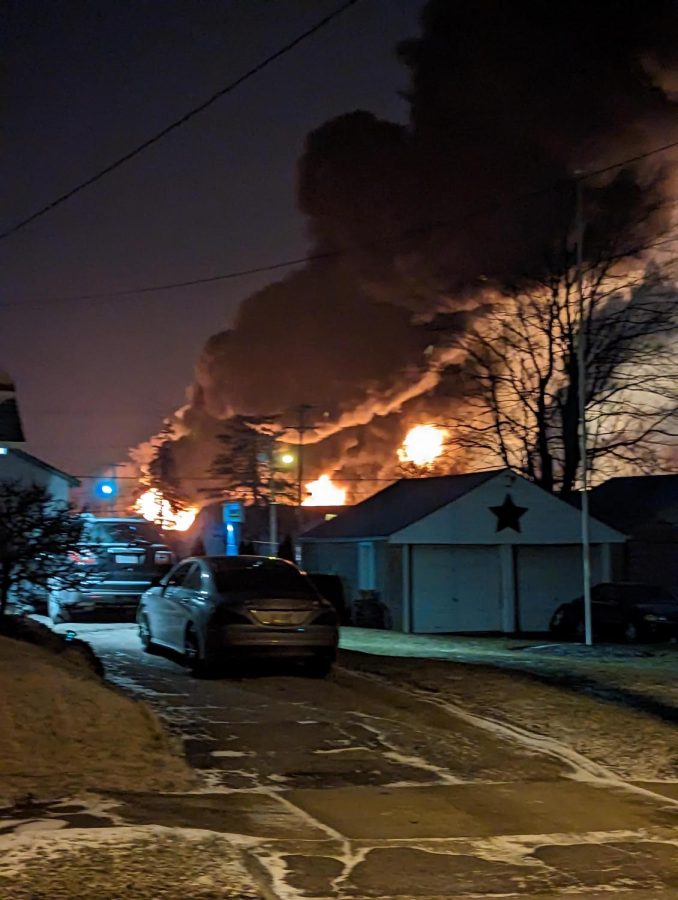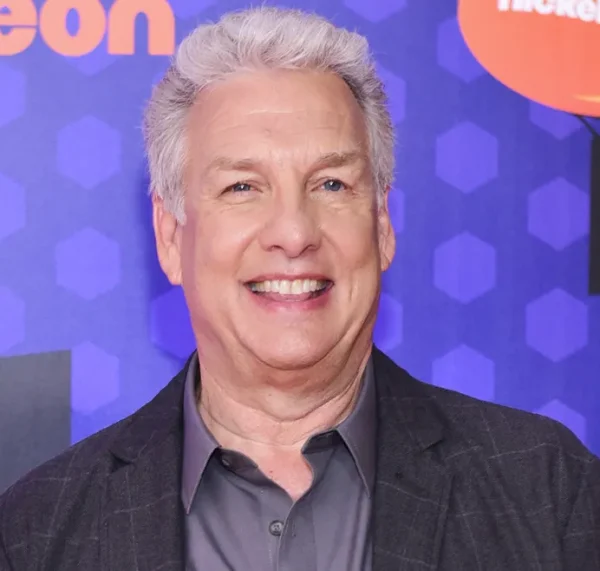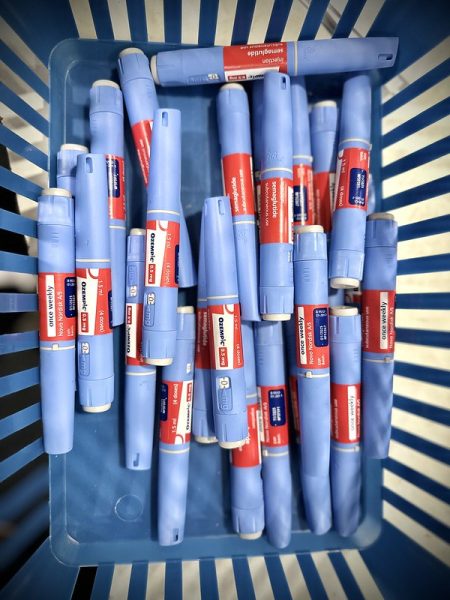The derailment in East Palestine, Ohio has left residents with hazardous chemicals and health problems

More stories from Alysse Calabio
A photo taken by someone who lives in East Palestine, Ohio on the night of the incident
On Feb. 3, a 50-car train derailed in East Palestine, Ohio—at least five of the cars held hazardous materials. All over social media, there has been a slew of speculations and misinformation going around as to what’s happened with the investigation thus far. But, in all reality, how truly dangerous is this spill?
Only recently has the reason for Norfolk Southern’s train derailment been discovered. In a video captured by a security camera in Salem, Ohio—20 miles from the site where the train was derailed—flames and sparks can be seen below one of the cars. In addition to that video, there was another video confirming there had been a problem with the rail car’s axles.
Just before 9:00 a.m. was when the incident ended up happening; however, what truly concerns people is not the fact that the train had toppled over but the fact that some of those cars had held materials such as vinyl chloride, butyl acrylate, ethylene glycol monobutyl ether, Ethylhexyl acrylate, and isobutylene. The problem with such materials is that they are known to be wildly hazardous for the health of the public and the environment alike.
Two days after, the residents of the surrounding area were ordered to evacuate due to the imposing threat that the burning train held—especially the threat of it exploding and hurting anyone living within a mile radius.
The next day, authorities did a controlled release of the chemicals in five of the cars that were in danger of exploding. They then ignited the vinyl chloride which they had released into a trough. By doing so, the cars released hydrogen and phosogen—a toxic gas—into the surrounding air.
Thus far, Norfolk Southern has cleared 15,000 pounds of soil and 1.1 million gallons of water that may have been contaminated.
Soon after, the residents were permitted to come back, but only after the air had been confirmed to be at a safe air quality level. Officials also stated that the municipal water was safe to consume. Thus far, Norfolk Southern has cleared 15,000 pounds of soil and 1.1 million gallons of water that may have been contaminated. They claim to have decontaminated the area of a “majority” of any hazardous materials.
Even so, the residents’ anxieties and concerns about the situation have yet to be put to rest. Some residents report conditions ranging from rashes to trouble breathing. In response, the state will open a health clinic for any residents who may be concerned about whether or not their conditions are connected to the release of vinyl chloride.
On top of the concerns for people’s health is the concern for how safe the water truly is. Some waterways did end up becoming contaminated and, consequently, killed thousands of fish downstream. However, officials say that it is now safe to consume municipal water and that they have contained the contamination. Even so, they still urge residents to test their surrounding water, soil, and air—especially if they use their own well.
For the future, US Transportation Secretary Pete Buttigieg has called for Norfolk Southern to take accountability for the damages they have caused and to implement measures to ensure that it will never happen again. The Environmental Protection Agency (EPA) announced that for every day that Norfolk Southern falls short on cleaning up—meaning that the EPA has to step in to help clean up the spill—they will fine the company $70,000.
The long-term effects on the town of East Palestine still remain unknown, but for now, the town will continue to work towards restoring itself back to its former glory.

Alysse Calabio is going on to her second and final year on The Central Trend. If there's anything she loves more than the world, it would be experiencing...













